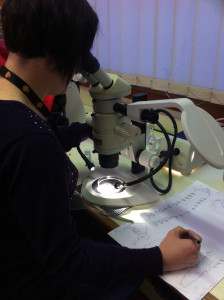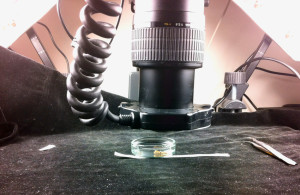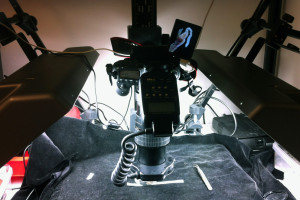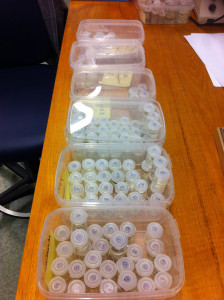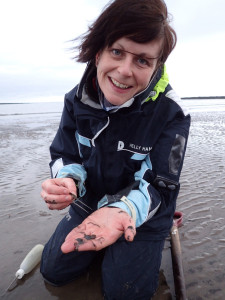
Collecting Magelona samples on my favourite sampling beach, Berwick-upon-Tweed, Northumberland. A beach known to many polychaetologists through the work of naturalist George Johnston.
Earlier this month we had a visit from Kate Mortimer from Amgueddfa Cymru – National Museum Wales. In her own words:
Magelonid polychaetes – Shovelhead worms
7th – 15th November
I have been specialising in the taxonomy of magelonid polychaetes for the last 15 years, particularly the investigation of species from Europe and the Indian Ocean. More recently I have been additionally studying the behaviour and functional morphology of this fascinating group.
Discussions with Jon Anders Kongsrud at the University Museum of Bergen (UMB) started at the International Polychaete Conference in Lecce 2010 about the MIWA-Project and the magelonid species off West Africa. I started work investigating the magelonid specimens from the MIWA-project back in 2013. Early investigation work suggested the possibility of up to 16 putative species from the samples, which potentially included several species new to science. So the work began, on the lengthy process of drawing, describing and imaging each individual species back at the National Museum Wales, in Cardiff.
- This animal is from Ghana
- Closer…closer..!
Whilst work continued looking at the morphology of these specimens it was decided that it would be prudent to come to the University Museum of Bergen to look at additional magelonid specimens from further MIWA samples, in order to select samples for DNA sequencing. The week would further cement morphological descriptions and to search for additional material of the rarer species within samples. So in November I took the trip to Bergen, leaving a wet and windy Cardiff behind and arriving in an equally wet and windy city!
After a week in the lab, over 100 vials of specimens and over 800 specimens have been studied. A further four potential species have been identified and the material is now ready for tissue sampling and photographing before the material is sent off to Canada for sequencing.
It has been a successful week, and I am very much looking forward to comparing the results from the sequencing to the morphology of these animals. Meanwhile back in Cardiff, we have selected specimens of similar British species for comparison to the West African material and Norwegian species.
Many thanks to all at the Museum for making me feel so welcome in Bergen. I very much look forward to collaborating with you on this project and look forward to some fascinating and interesting results from the project.

